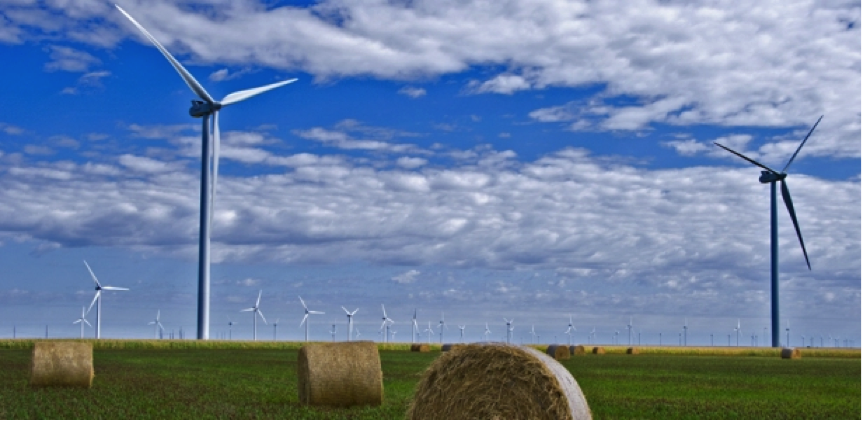The U.S. Environmental Protection Agency’s (EPA’s) plan to regulate carbon emissions is just the latest challenge facing the U.S. electric power system. Technological innovation is disrupting old ways of doing business and accelerating grid modernization. Earlier this year, AEE released Advanced Energy Technologies for Greenhouse Gas Reduction, a report detailing the use, application, and benefits of 40 specific advanced energy technologies and services. This post is one in a series drawn from the technology profiles within that report.

Wind is a free and abundant fuel source. Wind turbines convert the kinetic energy in wind into electricity. Turbines range in size from under 1 kW for off-grid or residential applications, to 8 MW for the largest units in development for offshore applications. For land-based wind farms, turbines typically range from 1.5-3 MW each and the projects typically consist of tens to hundreds of turbines spread over dozens or even thousands of acres for the largest projects.[1] The upwind three-blade design dominates the industry although there are novel designs used for smaller applications. Other major components are the nacelle, which houses the gearbox and generator, and the tower. That represents 4.4% of power-sector CO2 emissions, and is equivalent to taking over 16.9 million cars off the road.
In the United States, most wind power capacity is in large-scale wind farms, such as RES Americas’ 150 MW Hopkins Ridge wind farm serving Washington State utility Puget Sound Energy. Over 900 wind farms are installed across 39 states, with Texas leading the pack in installed capacity and California leading in number of turbines. Distributed wind systems from a few kW to MW-class are being installed by the thousands at homes, farms, businesses, and public facilities across all 50 states. A typical residential 10 kW turbine will save 250 tons of CO2 and 1.2 tons of air pollutants over its 30-50 year operating life.
The cost of wind power continues to decline. The levelized cost of wind power in 2012 was $40/MWh, with some PPAs pricing wind contracts as low as $19.50/MWh, making it competitive with traditional electricity generation sources in some areas of the country. With no fuel costs and low operations and maintenance costs, generators can sell this power via ffixed-price long-term contracts, or power purchase agreements (PPAs). And as a zero emission source of generation, wind power displaces generation by emitting technologies. The 167 million megawatt-hours of wind energy generated by wind power in the U.S. in 2013 resulted in the avoidance of 95.6 million metric tons of CO2. That represents 4.4% of power-sector CO2 emissions, and is equivalent to taking over 16.9 million cars off the road.
[1] The turbines and access to them only occupies about 5% of this land. The rest is available for other uses (e.g., agriculture) or can be left as is (e.g., forest).
